
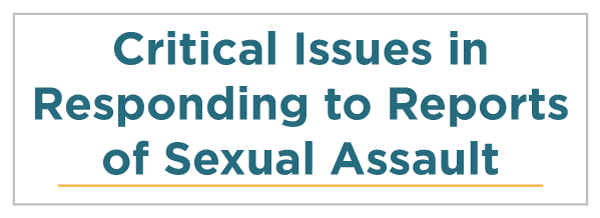 |
 |
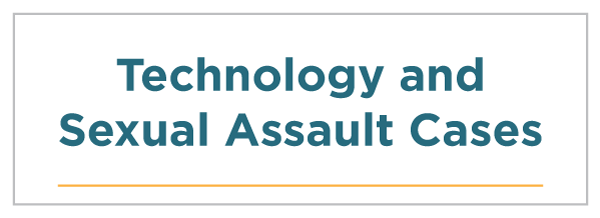 |
 |
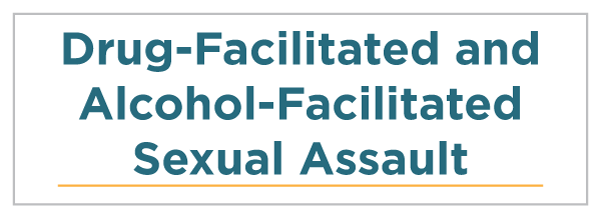 |
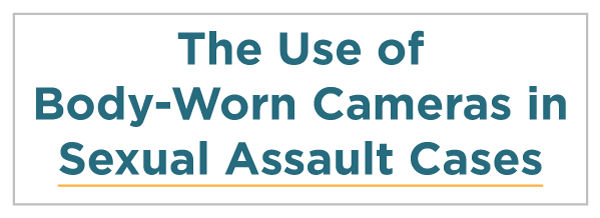 |
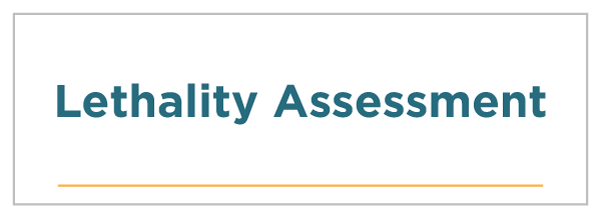 |
 |
 |
 |
 |
 |
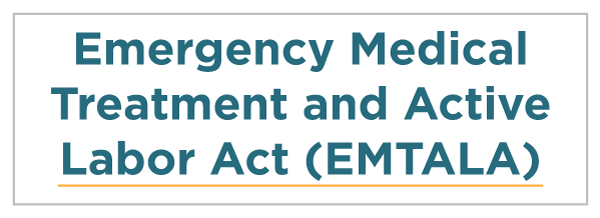 |
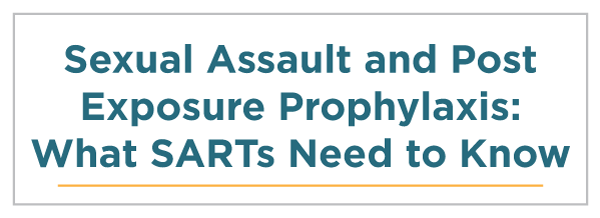 |
 |
Emergency Medical Treatment and Active Labor Act
SARTs should be aware of the potential complications to the victim surrounding the Emergency Medical Treatment and Active Labor Act (EMTALA). The federal EMTALA (42 U.S.C. §§ 1395dd) was enacted in 1986 to prevent patient dumping — refusing to provide emergency medical treatment to patients who cannot pay for their care or transferring them to another facility before stabilizing their condition.
The statute requires that emergency departments provide emergency medical screening. If the screening finds a need for medical treatment, the emergency department must provide that treatment until the patient is stable and then may transfer them to another hospital. The emergency department is not obligated to provide care if the screening does not indicate a need for medical treatment.
EMTALA guidelines may seem irrelevant for SARTs. However, “despite the fact that the purpose of the statute is to prevent ‘patient dumping,’ several courts have held that there is no requirement that the patient in fact be unable to pay his bills or that there be an economic motivation behind the decision to transfer the patient [see Cooper v. Gulf Breeze Hospital, 839 F. Supp. 1538 (1993)].”
For SARTs, this could be interpreted to mean that a hospital should not transfer victims before they are screened and stabilized because the hospital is unwilling to perform medical forensic exams. In addition, states that receive funding under the VAWA's STOP Formula Grant Program must certify that victims will not be held responsible for paying for medical forensic exams.
According to a national discussion on the SART email group hosted by the NSVRC, some hospitals that do not have sexual assault medical forensic exam programs medically screen patients according to EMTALA guidelines before transferring patients to facilities with forensic exam programs. In addition, there are hospitals that do not consider sexual assault victims to fall under EMTALA guidelines for emergency care and transfer patients without medical screenings.
A National Protocol for Sexual Assault Medical Forensic Examination: Adults/Adolescents, Second Edition recommends health care facilities evaluate the transfer of sexual assault victims to meet the needs of victims and to limit time delays and loss of evidence. SARTs should develop protocols for interagency transfers so all members of your SART are aware of the process, designated exam sites, and hospitals that are able to provide medical and forensic examinations.
Having an appropriate protocol in place will help SARTs direct patients to the appropriate location for treatment and avoid potential transfers. At a minimum, your SART could provide a list of designated exam sites to all local hospitals, law enforcement agencies, emergency medical services, sexual assault victim advocacy programs, and protective service agencies. [185]
SARTs can proactively support victims and service providers by developing clear protocols for transfer that outline the logistics of a transfer, including how a victim can be transferred, what medical care must be provided prior to transfer, and how the costs of transfer and medical screening at multiple emergency rooms will be covered.
In one jurisdiction where transfers were being made by ambulance, the ambulance charge was not covered because it was not considered a medical necessity or a part of the criminal investigation. After a protocol was created, hospitals changed their policies from transferring patients by ambulance to discharging them and referring them to SANE-staffed hospitals or designated medical forensic exam facilities. This saved victims the $800 fee for ambulance transfers.
Protocols can outline alternative forms of transportation such as taxis, law enforcement, and advocates, and include ways to cover costs when insurance is not available or requires a high deductible. Having procedures clearly documented in a protocol and available to all service providers and victims allows caregivers and first responders to focus on providing critical services in the moment rather than troubleshooting obstacles of a possibly time-consuming and costly process.
Conversations related to EMTALA may overlap with the following sections of the SART Toolkit:
- Crime Victim Compensation
- Protocol Development
- Health Insurance Portability and Accountability Act (HIPAA)
EMTALA Resources
American College of Emergency Physicians: EMTALA Fact Sheet
This page defines major provisions under EMTALA and provides answers to FAQs.
Do SANE Examinations Satisfy the EMTALA Requirement for “Medical Screening”? (PDF, 3 pages)
This article in the Journal of Emergency Nursing reviews the appropriate procedure for transferring a patient in need of a medical or forensic examination.
This site contains information about the history of EMTALA and its regulations, case law, FAQs, and revisions.
This page by the Centers for Medicare and Medicaid Services includes a list of EMTALA-related resources.
| Back | Index | Next |
